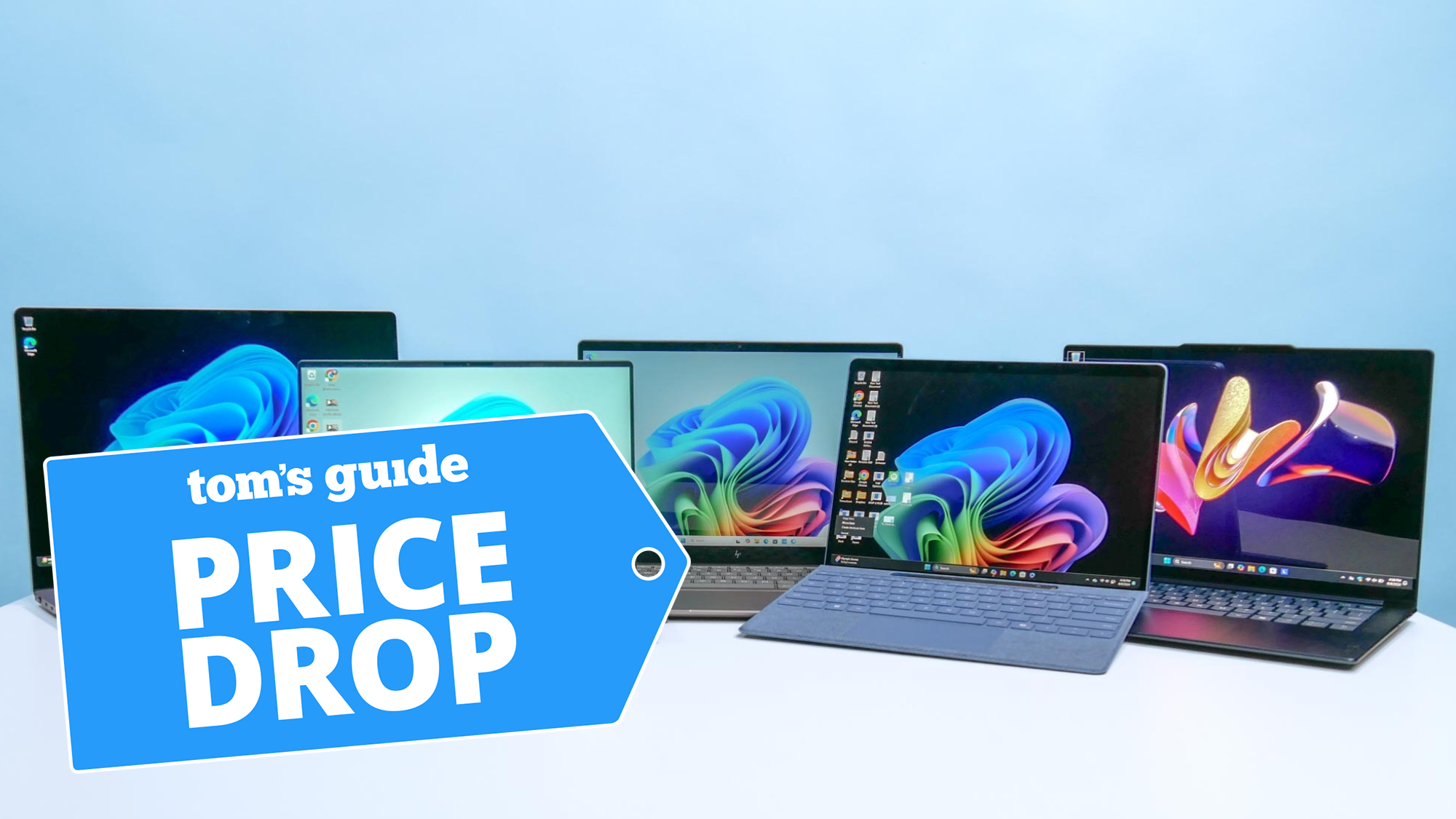Tom's Guide Verdict
The Acer Predator G1 packs 4K- and VR-ready gaming performance inside of a stunning and small package.
Pros
- +
Slick, compact design
- +
Awesome lighting options
- +
Great gaming performance
- +
Lots of extra goodies
Cons
- -
Limited upgradability
- -
No cheaper configs available (yet)
- -
Cumbersome power brick
Why you can trust Tom's Guide
The Acer Predator G1 proves that sometimes it's OK to judge a book by its cover. This small stunner of a desktop finds a brilliant middle ground between looks and practicality, with a travel-ready chassis, dual headphone racks and some of the best lighting effects you can find on a gaming PC. You can even get this desktop bundled with its own suitcase for when you need to travel to a tourney.
But things only get more fun once you turn the Predator G1 on, thanks to its VR- and 4K-ready GeForce GTX 1080 graphics card and speedy Core i7 processor. Despite limited upgradability and a lack of configuration variety (for now), the Predator G1 is one of the most well-designed compact gaming PCs you can buy.
Design: Mini monster
With its tire-like scales and guitar-amp-esque side panels, the black-and-red Predator G1 looks like something you'd find at a heavy metal LAN party. The G1 is essentially a scaled-down version of Acer's monstrous Predator G6 desktop, with a dizzying design that's complemented by practical features, such as dual headphone racks that slide out of either side.
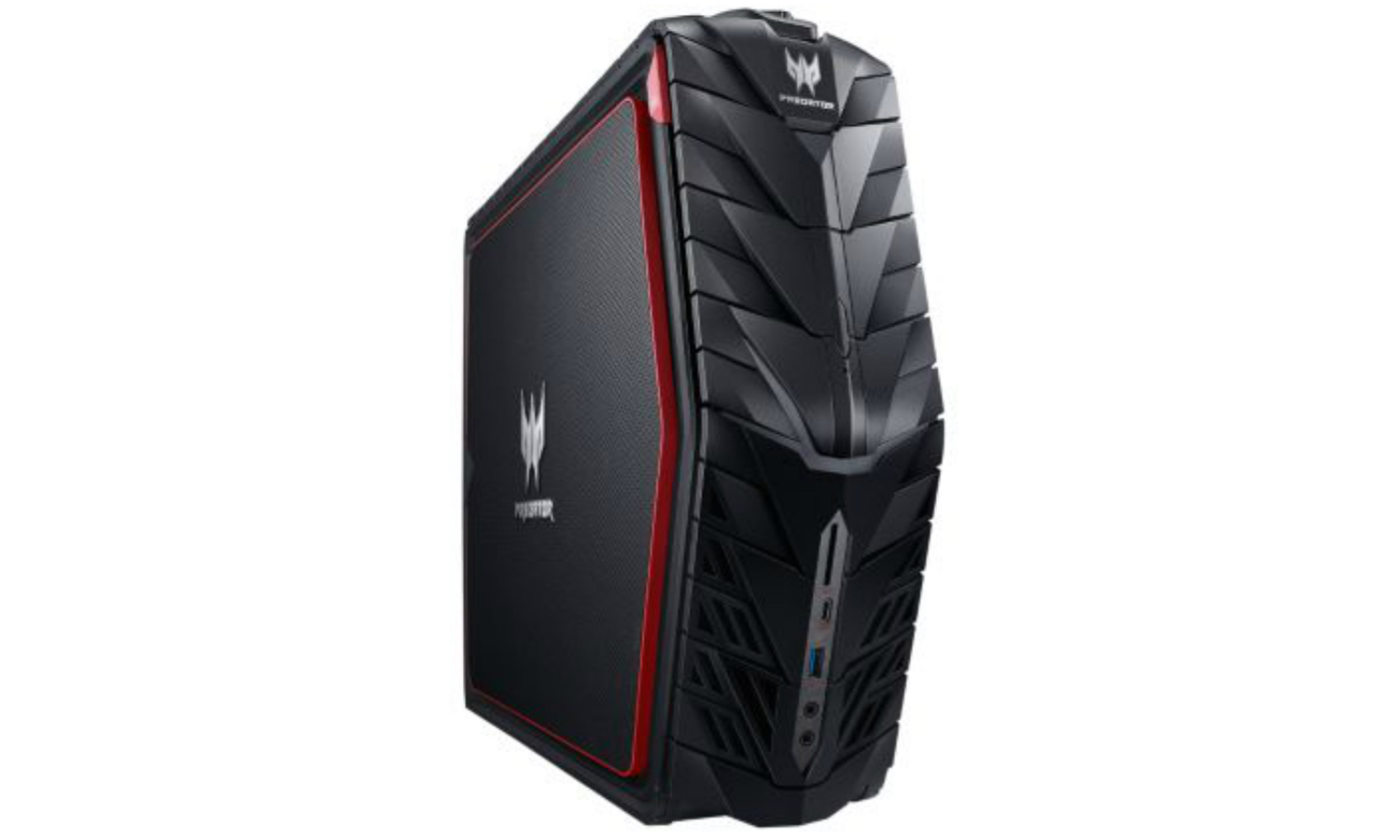
While the 16.5 x 13.7 x 4.3-inch, 17.6-pound G1 looks positively bite-size next to its big brother, the G1 is not quite the most compact small desktop out there. The Alienware X51 (12 pounds) and Asus ROG G20CB (14 pounds) are both a little slimmer and shorter, and while the X51 would look at home in your entertainment center, the G1 will stick out like a sore thumb.
The G1's compactness also comes at the cost of a massive external power brick, which requires two power outlets. The G20CB requires a similar brick, but the extra-sleek X51 does not.
MORE: The Best Gaming Desktops Available Now
Ready for the Road
If you need to lug the Predator to your next tournament, the special edition we reviewed includes an airport-ready transport case. The case looks like a standard piece of luggage, save for its shiny, gray exterior and the same scaly textures you'll find on the desktop itself.
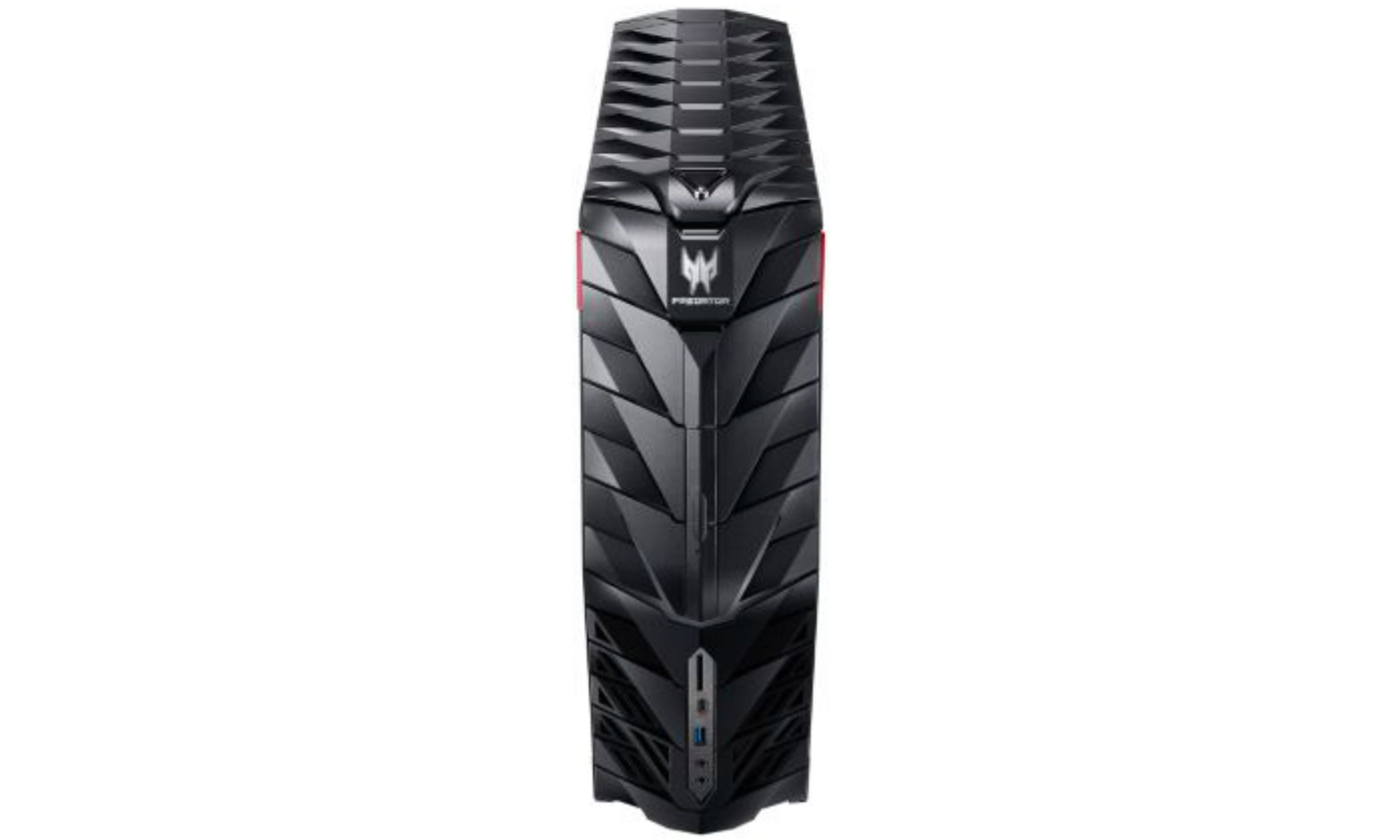
You can lock the case using a key or number code, and it secures both the Predator and its accessories between thick layers of foam. While I'm pretty confident that the inside of the case is safe for your PC, I have some concerns about the plastic exterior, which feels flimsy enough to suffer some dents after tumbling around in a cargo hold. I tossed the Predator inside of the case to test it out, and it fit neatly and snugly into the foam outline carved out for the PC.
LAN-Worthy Lighting
The Predator G1 offers some of the coolest and most customizable lighting I've ever seen on a gaming PC — and this is coming from someone who regularly works with desktops that look like Christmas trees. Using the Predator Sense app, you can tweak the colors of the PC's top-facing Predator logo, some backlights toward the bottom and a badass-looking strip of light along the middle called the V Badge. (I personally like to call it the Demon Mouth, because, well, look at it.)
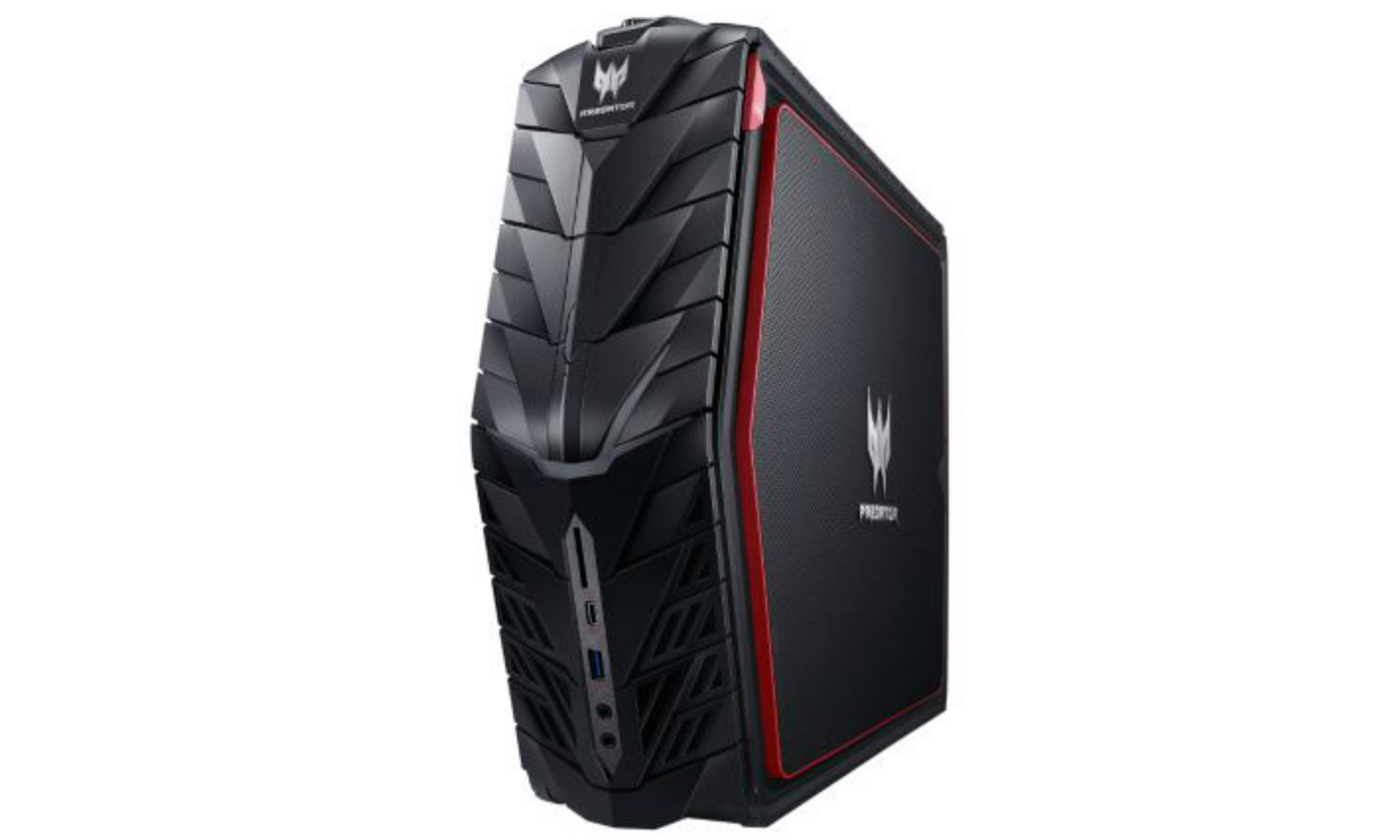
Aside from changing each light to just about any color imaginable, you can also play with a handful of fun effects. Marquee mode sends light bouncing side to side, while Pulsing mode makes your color of choice fade in and out. There's also a Meteor Shower setting for the V Badge, which sends light crashing down and fading to the sides. You can even set the Predator's lights to sync up with your headphone audio; this triggered a sweet reactive light show when I threw on some Blink 182.
If you need to lug the Predator to your next tournament, the special edition we reviewed includes an airport-ready transport case.
I had almost as much fun toying with the Predator's lights as I did playing games on this machine. The only recent desktop whose lighting rivals the G1's is the Asus ROG G20CB, which features taller, more extraterrestrial-looking LEDs.
In addition to its lighting features, Predator Sense lets you glance at the machine's CPU frequency and system temperature, as well as adjust fan speeds.
Plenty of ports, limited upgradability
The G1's front panel sports a well-concealed DVD-RW drive, as well as headphone and mic jacks, an SD card reader, a USB 3.0 port, and a USB 3.1 Type C port for those with newer gadgets.
In the back, you'll find four USB 3.0 ports, an Ethernet jack, and a full suite of audio-in and -out ports. There's also the machine's Nvidia GTX 1080 graphics card, which packs the usual three DisplayPorts, single HDMI port and single DVI port for all of your monitor needs.
The Predator G1 offers some of the coolest and most customizable lighting I've ever seen on a gaming PC
After removing two screws, I was able to slide off the Predator's side panel and gain access to the RAM slots, which you can use to upgrade the machine's memory from 32GB to 64GB. Other components, such as the GPU, are closed off, though there is an empty 2.5-inch hard drive bay for adding extra storage. The Predator G1's upgradability is fairly limited but better than that of the Alienware X51 or Asus G20GB, neither of which is designed to be opened up.
Gaming Performance
Packing Nvidia's new GeForce GTX 1080 graphics card, the Predator G1 is about as top-tier as it gets for single-GPU graphics performance. The PC had no problem rendering Rise of the Tomb Raider's gorgeously snowy compounds in 4K, while still allowing me to sneak, shoot and climb my way through the environment at a steady 45 frames per second. Once I lowered the resolution to a still-rich 2560 x 1400, I enjoyed even smoother, 60-fps action. This is similar performance to what I experienced on other GTX 1080-powered machines, such as Alienware's Aurora.
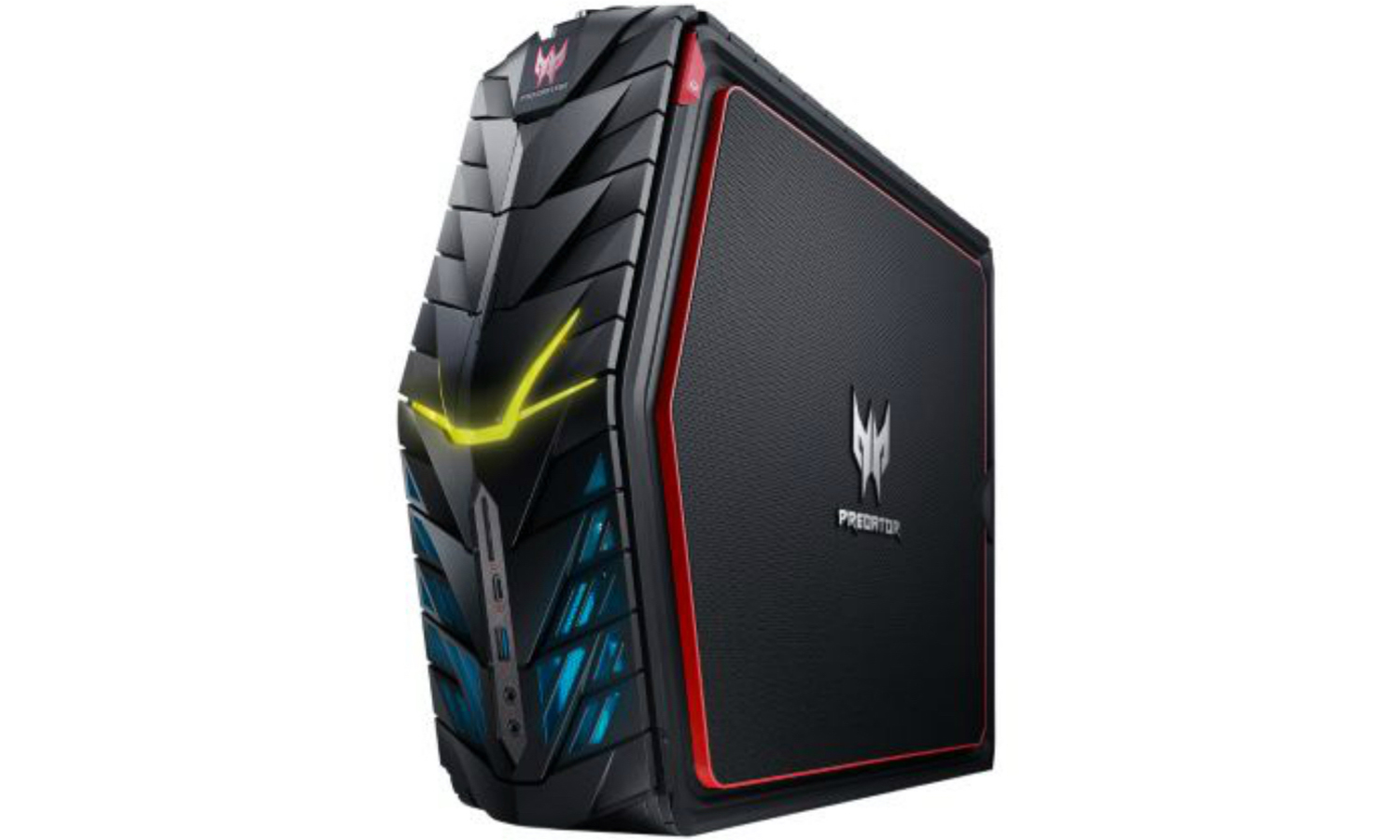
The Predator turned in a strong 111.3 fps on the intense Metro: Last Light benchmark at 4K on low settings. But, as even some of the strongest PCs do, it fell to just 15 fps with the graphics maxed out. The Predator G6, the G1's bigger, 980-powered brother, turned in low and high results of 78 and 16 fps, respectively.
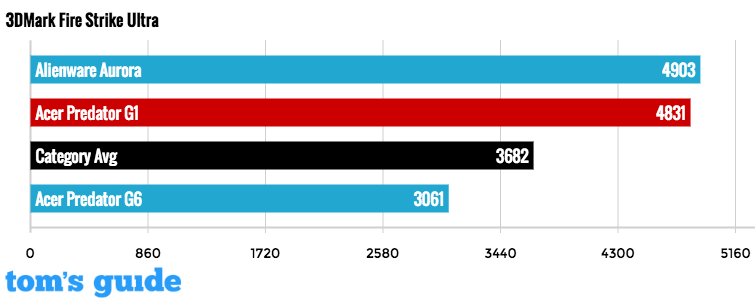
Acer's desktop scored a 4,831 on the 3DMark Fire Strike Ultra test, a showing that's on par with the Aurora (4,903) and better than the scores of our GTX 980-powered Predator G6 (3,061) and the 3,682 gaming desktop average.
VR Readiness
The Predator G1's speedy Core i7 processor and GTX 1080 GPU make it a no-brainer for VR, but I ran a few tests to be absolutely certain. Unsurprisingly, the G1 passed the Oculus Compatibility Tool test, which scans for PC to ensure you have the proper graphics card, RAM, CPU and ports for virtual reality.
The GTX 1080 graphics card had no problem rendering Rise of the Tomb Raider's gorgeously snowy compounds in 4K.
Acer's PC crushed it on the more comprehensive SteamVR Performance Test, which runs a brief Portal-themed demo and rates your machine as Not Ready, Capable or Ready. The Predator G1 was as far into the Ready bracket as possible, with an overall score of 11 (which Valve considers very high). To put that score in perspective, the GTX 970-powered Alienware X51 and Asus G20CB both scored closer to 6.
Overall Performance
Once I eventually pried myself away from playing games to write this review, I discovered that the Predator's brisk Intel Core i7-6700 CPU and 32GB of RAM make it a beast of a multitasking machine. The desktop never slowed down or crashed during my time with it, even as I jumped among a dozen-plus browser tabs while downloading a game, running a system scan and watching multiple Pokemon Go Twitch streams (yes, I have a problem). Oh, and that was all while running Rise of the Tomb Raider in 4K on a separate monitor.
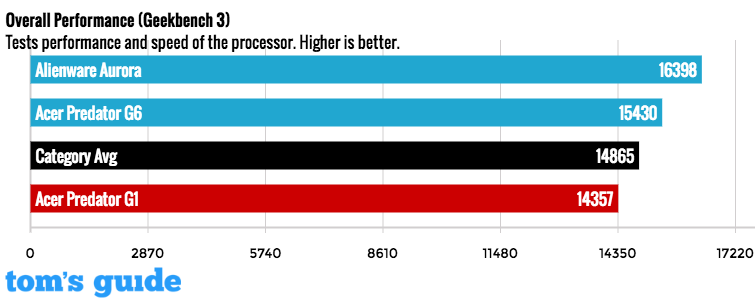
The Predator netted a 14,357 on the Geekbench 3 overall performance test, trailing our Alienware Aurora (16,398; Core i7-6700K) while hovering right behind Acer's Predator G6 (15,430, Core i7-6700K) and our 14,865 average for gaming PCs.
Our Predator G1, thanks to its speedy 512GB SSD, copied about 5GB of files in a blistering-fast 8 seconds. That's a transfer rate of 621.5 MBps, which beats out our Aurora's 512GB SSD (198 MBps), our Predator G6's 256GB SSD (191 MBps) and our 246.46 MBps average.
MORE: The Best Headsets for Immersive Gaming
Keyboard and Mouse
Lots of gaming desktops ship with pretty generic accessories (if any), which is why I was pleased to find a legitimate mechanical keyboard in my Predator G1 box. The Predator Flare keyboard features customizable backlights and a breakaway micro USB cable, and is fairly compact for a full-size set. You can even record macros on the fly, which I found pretty easy to do.
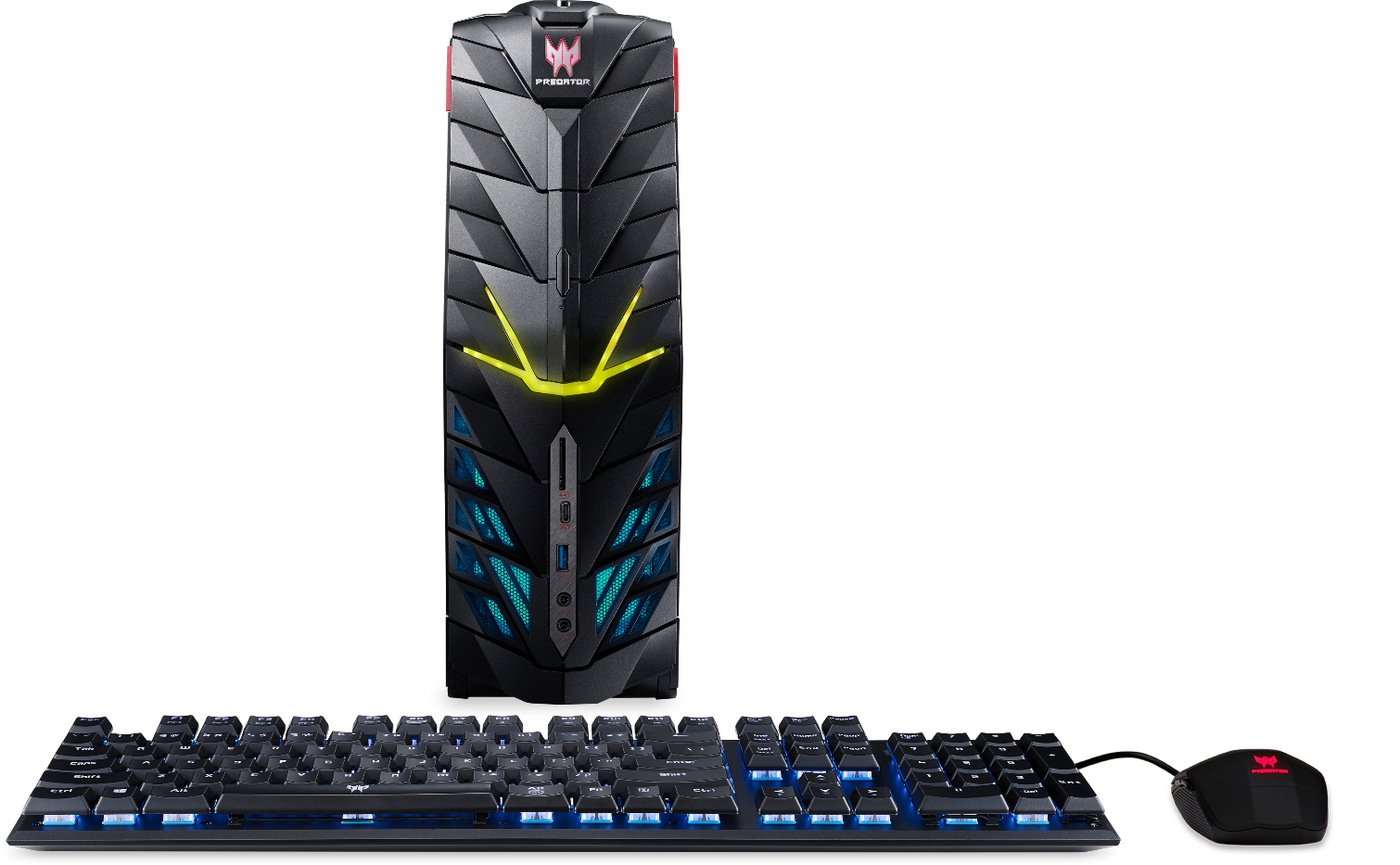
While I eventually got used to them, the Flare's keys felt too resistant for my liking. Using the keyboard, I netted 80 words per minute with 93 percent accuracy on the Key Hero Typing Test, scoring well below my 95- to 100-wpm norm. I passed the Flare to our resident keyboard expert, Marshall Honorof, who said he felt the device's keys had a nice springiness to them, but also found it nearly impossible to successfully hit the "E" key.
MORE: Our Favorite Gaming Keyboards
The red-backlit Predator Mouse, on the other hand, didn't give me any problems. Its ergonomic, claw-friendly shape stayed comfy throughout my time with the Predator, and the mouse's two thumb-buttons and centered DPI switch proved useful in the heat of battle.
Configurations
The $2,299 Acer Predator G1-710-70001 model we got our hands on is the only version of the PC currently out there, and includes an Intel Core i7-6700 CPU, 32GB of RAM, a 2TB hard drive with a 512GB SSD and Nvidia's top-of-the-line GTX 1080 graphics card.
You'll also get the Flare mechanical keyboard, the Predator mouse, a copy of Tom Clancy's The Division and the G1 desktop transport case, which is a nice amount of extra goodies. The PC ships with a two-year parts and labor warranty, with upgrade options for a one-year extension ($69) or a one-year extension with two years of onsite support ($89).
Bottom Line
I almost want to recommend the Predator G1 on looks alone; it's just that attractive. But there are plenty of practical touches to back up the striking looks and awesome lighting effects, including two headphone racks and a front-facing USB Type-C port. The G1 also manages to stuff Nvidia's best graphics card into an impressively small package, complete with enough Core i7 processor power to get you through any nongaming-related task.
You get a lot for the G1's admittedly hefty $2,299 price tag, including a travel suitcase, a gaming-grade keyboard and mouse, and a copy of The Division. However, that high-end package is currently the only one available, so you'll have to wait if you want the G1's attractive design with more affordable components. It won't slide into your entertainment center as well as the Asus G20CB will, and it's not nearly as upgradable as the Alienware Aurora. But if you can live with those trade-offs, the Predator G1 is one of the best-performing, and best looking, compact gaming PCs around.
Mike Andronico is Senior Writer at CNNUnderscored. He was formerly Managing Editor at Tom's Guide, where he wrote extensively on gaming, as well as running the show on the news front. When not at work, you can usually catch him playing Street Fighter, devouring Twitch streams and trying to convince people that Hawkeye is the best Avenger.
-
Downshift I have a question. I live in the Netherlands where you can only get the version with the gtx 970.Reply
Can I upgrade to the 1080 without problems?

